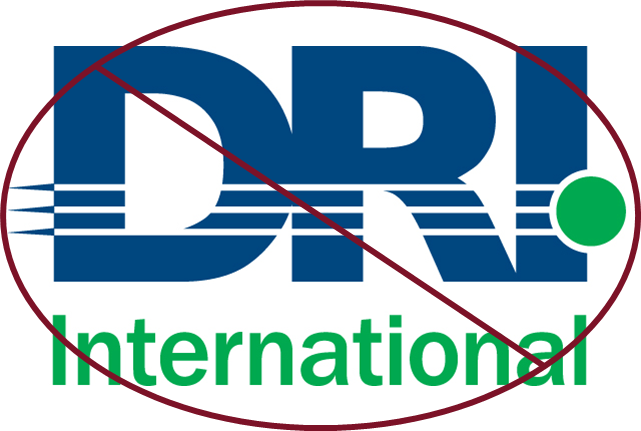The Executive Guide to Business Continuity (Series) - Part 5: How an Executive BIA (eBIA) Bridges Gaps Between Operations and Strategy
Introduction
In most organizations, business continuity plans are built from the ground up, starting with insights into critical processes and recovery priorities at the department level. While this approach provides valuable information, it often misses the strategic perspective of leadership. This disconnect between operations and strategy can result in uneven priorities, overlooked risks, and inefficiencies.
An Executive Business Impact Analysis (eBIA) is a high-level assessment designed to engage leadership in identifying the organization’s most critical priorities, risks, and dependencies. By involving executives in the business continuity process, you can align operational continuity with strategic goals, ensuring the entire organization is moving in the same direction.
What is an Executive BIA?
An Executive Business Impact Analysis (eBIA) is a streamlined, leadership-focused version of a traditional BIA. Instead of diving into detailed department-level processes, an eBIA focuses on gathering insights from executives and senior leaders to identify the organization’s overarching priorities and risks.
The eBIA process typically involves:
- Materiality Matrix Development – Identifying and ranking the impacts of disruptions, from low to critical, across financial, reputational, and operational dimensions.
- Criticality Assessments – Engaging leaders from key functions (e.g., finance, operations, IT) to determine the relative importance of departments, their processes, and their dependencies.
- Application and Vendor Reviews – Identifying mission-critical tools, systems, and vendors that support strategic operations.
- Strategic Risk Alignment – Mapping continuity priorities to the organization’s overall risk management framework.
The goal is to establish a high-level understanding of what’s truly critical to the organization, creating a foundation that can be used in department-level BIAs to ensure alignment with leadership’s vision.
Why Conduct an eBIA?
An eBIA bridges the gap between operational resilience and strategic priorities, offering several key benefits:
- Aligns Continuity Efforts with Business Strategy
Executives provide the strategic context for continuity planning, ensuring that recovery priorities support the organization’s long-term goals. - Provides a Clear Top-Down Framework
With an eBIA, operational teams have a clear understanding of what leadership considers critical, reducing ambiguity and improving focus. - Enhances Executive Buy-In
By involving leadership early in the process, you build awareness and support for continuity efforts, making it easier to secure funding and resources. - Identifies Strategic Risks and Dependencies
The eBIA highlights vulnerabilities that may not surface in department-level assessments, such as reliance on key vendors or the risks of reputation damage. - Improves Collaboration Across Departments
The eBIA fosters a shared understanding of organizational priorities, promoting cross-functional cooperation during disruptions.
Key Steps in Conducting an eBIA
Here’s how to conduct an effective Executive Business Impact Analysis:
- Engage Leadership Early
Schedule workshops or interviews with key executives, including C-suite leaders and senior managers from critical functions like finance, operations, IT, and HR. Frame the eBIA as a strategic exercise that directly supports organizational resilience. - Develop a Materiality Matrix
Work with leadership to identify and rank potential impacts, such as financial loss, reputational damage, customer dissatisfaction, and regulatory penalties. This matrix helps executives visualize what’s at stake and prioritize accordingly and can be used in department-level BIAs to identify specific process criticality. - Assess Departmental Criticality
Facilitate discussions to determine the relative importance of each department or function, based on its contribution to overall goals and its dependence on other areas. - Evaluate Applications and Vendors
Identify mission-critical systems, tools, and external partners. Discuss what would happen if these resources became unavailable and assess the risks to operations and strategy. - Synthesize and Share Results
Summarize the findings in a concise, actionable report. Use visual tools like dashboards, heatmaps, or SWOT diagrams to communicate key insights effectively. - Connect to Department-Level BIAs
Use the eBIA results as a baseline for more detailed BIAs. Any deviations or changes at the department level should be reviewed and approved by leadership to ensure alignment.
The Role of an eBIA in Your Resilience Program
The eBIA isn’t just a one-off exercise—it’s a critical component of a mature resilience program. It creates common language between executives and operational teams, ensuring that continuity plans are both practical and strategically sound. The eBIA integrates into your overall resilience efforts by providing:
- Baseline for Maturity Assessments – The eBIA provides a foundation for evaluating the maturity of your organization’s continuity and resilience efforts.
- Improved Resource Allocation – By highlighting what’s truly critical, the eBIA helps leaders allocate resources more effectively, reducing waste and focusing on high-priority areas.
- Enhanced Crisis Preparedness – With a clear understanding of strategic priorities, the organization is better positioned to respond to disruptions cohesively and effectively.
Conclusion
The Executive Business Impact Analysis (eBIA) is a powerful tool for aligning operational continuity with strategic goals. By engaging leadership in the process, organizations can bridge the gap between strategy and operations, creating a more focused, efficient, and resilient business continuity program.
Whether you’re just starting your continuity journey or looking to refine an existing program, the eBIA is an essential step toward aligning resilience efforts across the entire organization.
Reach Out for a Sample eBIA Template
If you’re looking to get started with an Executive Business Impact Analysis (eBIA), I’ve created a sample template to help guide the process. It includes sections for assessing material impacts, identifying critical dependencies, and aligning continuity efforts with strategic goals. Feel free to reach out to me directly (Nathan.shoptaw@pinnacleappinnovators.com), and I’ll be happy to share the template with you.
What’s Next in the Series
In the next blog, we’ll dive into how technology can enhance resilience efforts, from streamlining maturity assessments to building dynamic response plans. You’ll learn how tools like Power Apps and Power BI can simplify complex processes, improve collaboration, and provide real-time insights to strengthen your resilience program.











